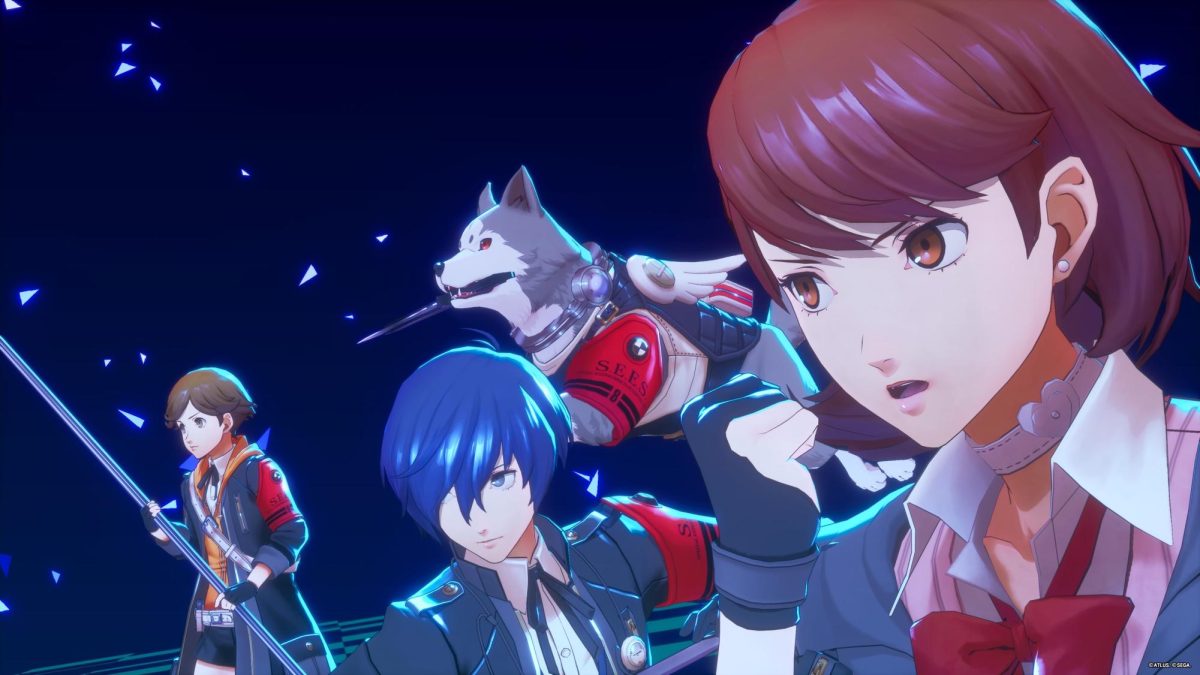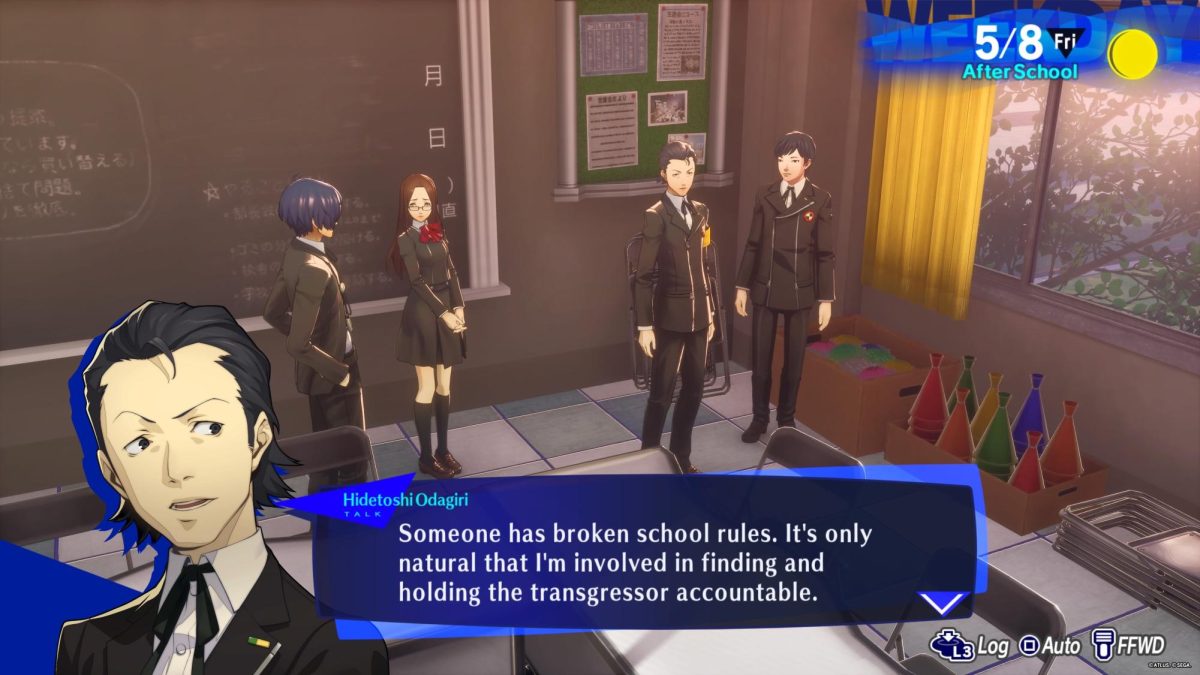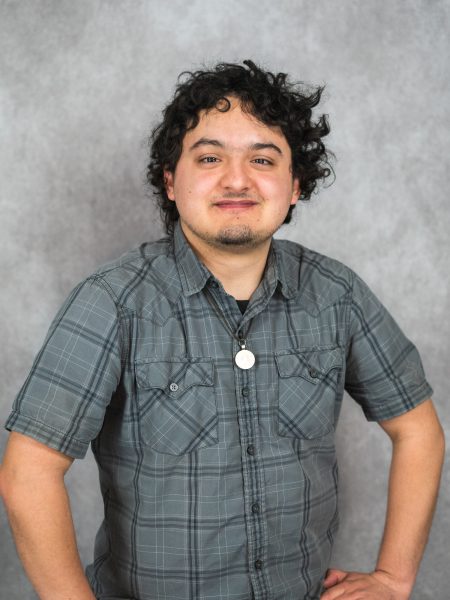Coming off the heels of a strong year for video games, 2024 is starting off on an equal note with Atlus’s remake of “Persona 3,” the classic PS2 title which steered the series into its current direction. “Persona 3 Reload” does a fantastic job recapturing the identity of the almost 18-year-old original while also introducing visual upgrades and quality of life changes that bring the game up to the series’ current standards.
Much like the original and the titles that came after, “Persona 3 Reload” is effectively two games in one package: a social simulator and a dungeon-crawling turn-based RPG, with both aspects tying into each other in fun and unique ways.
The game’s story revolves around the “Specialized Extracurricular Execution Squad” (also known as SEES in game), a group of high school students who have the ability to fight monsters, referred to as Shadows, and put an end to the Dark Hour, a time period that occurs at midnight which only specific individuals can experience.
The story has the same exact twists and turns as the original, and, despite the visual differences and voice actor overhaul, the game doesn’t lose what made it so beloved by fans. “Persona 3 Reload” does a phenomenal job telling its story and getting its poignant themes across through dialogue and events.
The social simulator aspect of the game is where players will spend the majority of their time. This side of the game is split into both a day and night section in which you wander the city each day of the in-game calendar, planning your days and engaging in activities to raise social stats and increase your bond, or “Social Link,” with a varied assortment of characters.
Both social link events and main story cutscenes contain full voice acting as opposed to only the main story, which adds far more depth to the game’s many memorable side characters and makes them all extremely memorable.
“Persona 3 Reload” simplifies the mechanics of the social aspects compared to the latest mainline title in the series, “Persona 5,” by reducing the number of social stats down to three and no longer hiding gameplay features behind Social Links.
While this makes the systems less interesting and vital to engage in, it also makes them more manageable and lessens the pressure to complete everything in a single playthrough.
The Dark Hour, meanwhile, is where the dungeon-crawling turn-based RPG elements come into play. With the exception of boss fights taking place on nights with a full moon, most of this takes place in Tartarus, a multi-floor dungeon that changes its layout each day.
Tartarus consists of over 200 floors split into six aesthetically different sets, referred to as “blocks,” each with differently laid out paths, and four of which are split into two parts. New parts are unlocked after the monthly full moon.
Each floor features enemies, or “Shadows,” roaming the halls which players can attack (or be attacked by) to initiate battles. Some rooms contain treasure chests or destructible objects which contain items players can collect.
Tartarus is quite enjoyable to explore overall. The game adds more features that change up the exploration process as the story progresses, making sure that the experience never gets stale.
Exploring Tartarus will take the place of activities or social links engaged with during the night. With that said, there is nothing to restrict players from blazing through Tartarus as far as they can go that month in one night.
Going into Tartarus once per month is also more than enough to get players strong enough to face the boss on the next full moon. This is fantastic as it allows players to maximize their social life at night.
One of the most lauded aspects of the “Persona” series is each game’s soundtrack, and “Persona 3 Reload” is no exception. The entire remade soundtrack does a fantastic job serving the purpose of each track, with one of the best examples being the full moon boss theme, “Master of Shadow.”
However, the returning tracks that have received huge changes and the completely new ones are the absolute highlights of the soundtrack. Notable examples include the returning second semester school theme, “Changing Seasons,” the brand-new nighttime exploration theme, “Color Your Night,” and the newly added player advantage battle theme, “It’s Going Down Now.”
The entire soundtrack is effective at setting the tone it’s committed to and almost all the tracks are fun to listen to on their own. The new tracks especially stand out as they fit in perfectly with the hip-hop aesthetic that the rest of the soundtrack (and the original) brings to the table.
It’s hard to identify any huge negatives with “Persona 3 Reload.” The absence of the epilogue and female protagonist from the original game’s re-releases is disappointing, but wasn’t enough to detract from the quality of the core experience.
The day-to-day gameplay did get somewhat dull after all three social stats were maxed and the social links available that day were done, and Tartarus got tediously repetitive after a while.
However, the excitement quickly picked back up on days when there were activities to engage in. The differing path shapes and overall aesthetics of each block of Tartarus also mitigated the tedium and made the experience fresh and exciting every time a new one would unlock.
While not a definitive negative or positive, the game is very long. Breezing through the game as fast as possible will take around 60-70 hours, but slowing down to experience everything the game has to offer will take around 80-100 hours.
Regardless, “Persona 3 Reload” was an absolute joy to play for the entire 95-hour playthrough. It faithfully recreates the classic PS2 title for modern audiences without losing the nuance of the original and the thought-provoking, profound story that came with it. To players who can manage their time around a long game, it is incredibly easy to recommend “Persona 3 Reload.”




